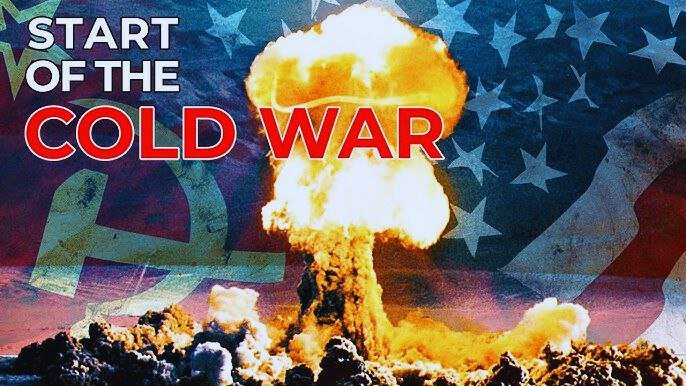Contents
Introduction to the Cold War
The Cold War, spanning from the end of World War II in 1945 to the dissolution of the Soviet Union in 1991, was a period marked by profound geopolitical tension between the United States and the Soviet Union. This era was characterized by an ideological conflict that pitted the democratic and capitalist values of the United States against the communist and socialist doctrines of the Soviet Union. The impact of this prolonged standoff reverberated across global politics, influencing international relations, military strategies, and economic policies for nearly half a century.
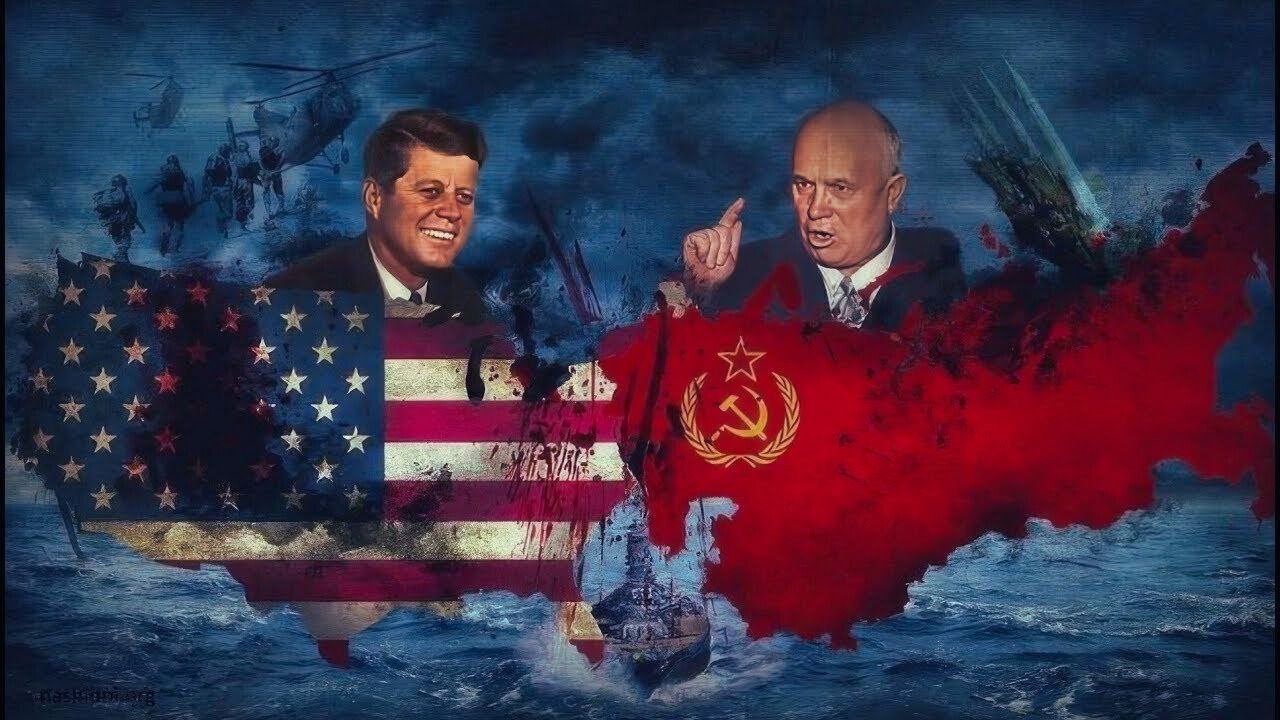
The term ‘Cold War’ itself was coined to describe the nature of this confrontation. Unlike traditional conflicts, the Cold War did not involve direct military battles between the two superpowers. Instead, it was a war of ideologies, fought through proxy wars, espionage, propaganda, and political subversion. The absence of direct conflict led to the moniker ‘cold,’ as both nations maneuvered to expand their influence without engaging in a full-scale war.
The origins of the Cold War can be traced back to the closing stages of World War II. As the Allied forces emerged victorious, stark differences in their visions for the post-war world order became evident. The United States advocated for a world based on democratic principles and open markets, while the Soviet Union aimed to spread its model of a centrally planned, socialist state. This ideological rift soon translated into a struggle for dominance, with each superpower seeking to expand its sphere of influence across Europe, Asia, and beyond.
Throughout the Cold War, numerous events underscored the intensity of this rivalry. The Berlin Blockade, the Korean War, the Cuban Missile Crisis, and the Vietnam War are just a few examples of the flashpoints that brought the world to the brink of nuclear catastrophe. The arms race, space race, and various summits and treaties were also critical components of this era, reflecting the continuous efforts of both the United States and the Soviet Union to outmaneuver each other on the global stage.
As we delve deeper into the intricacies of the American Cold War era, it is essential to understand the foundational aspects that defined this period. This introduction sets the stage for a comprehensive exploration of the events, policies, and cultural impacts that shaped one of the most significant epochs in modern history.
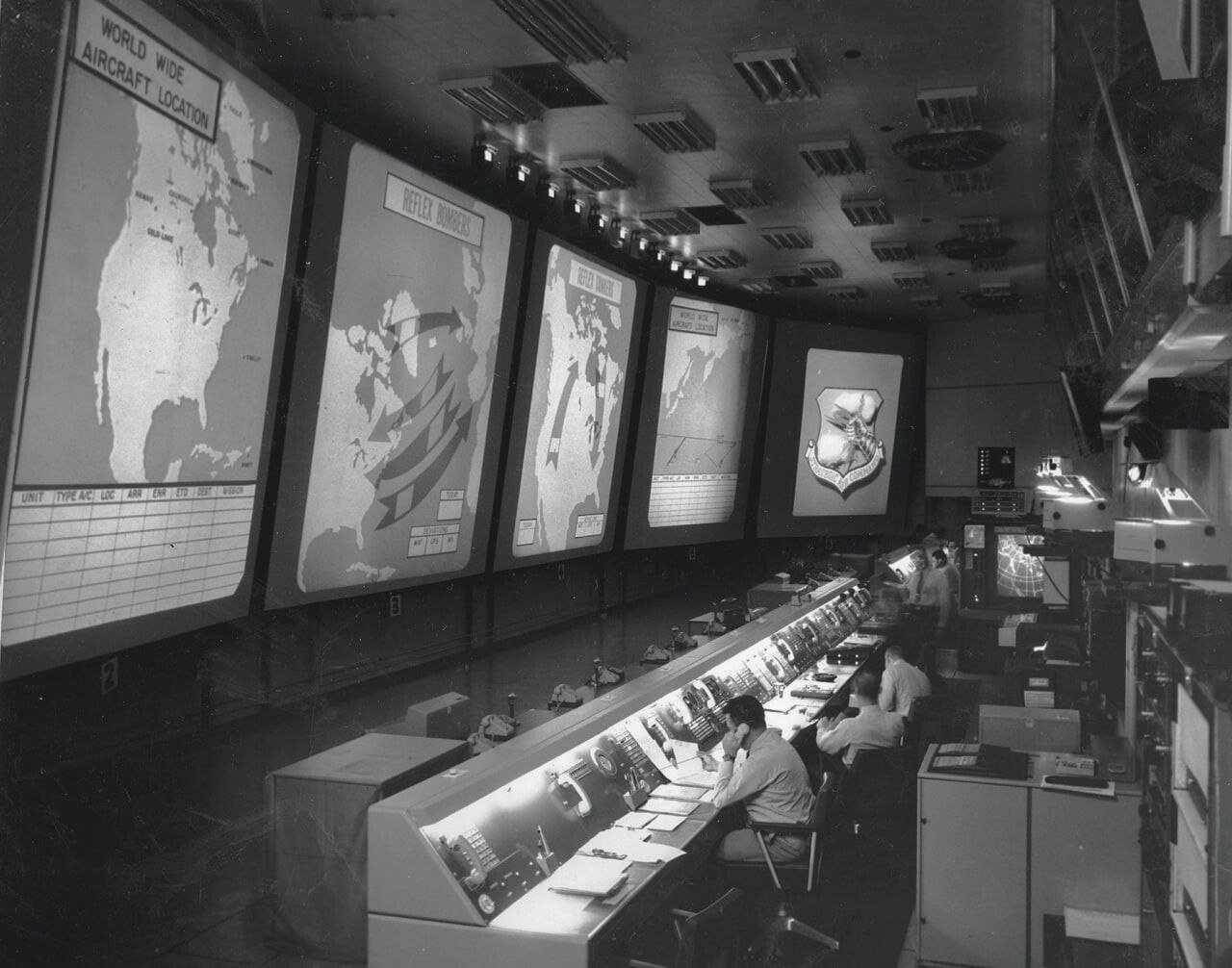
Origins and Early Tensions
The origins of the Cold War can be traced back to the geopolitical upheavals that emerged during and immediately after World War II. The seeds of tension were sown in the waning days of the war, particularly during the Yalta and Potsdam conferences. These meetings, held in February and July 1945 respectively, brought together the Allied leaders Franklin D. Roosevelt, Winston Churchill, and Joseph Stalin. Their aim was to negotiate the post-war order, but the differing visions for Europe’s future created a rift that would later harden into the Cold War.
At Yalta, the leaders agreed on the division of Germany into occupation zones controlled by the United States, the Soviet Union, the United Kingdom, and France. This arrangement, while pragmatic, laid the groundwork for future conflicts. The Potsdam Conference further highlighted the ideological divide between the American and Soviet visions. The inability to reach a consensus on key issues, such as the reconstruction of Germany and the political future of Eastern Europe, exacerbated the mistrust between the two superpowers.
In March 1946, Winston Churchill’s Iron Curtain speech crystallized the growing divide. Churchill famously declared that an “iron curtain” had descended across Europe, symbolizing the ideological and physical division between the capitalist West and the communist East. This speech was a clarion call to the Western powers, emphasizing the need to counter Soviet expansionism.
The United States, under President Harry S. Truman, responded with the Truman Doctrine, announced in 1947. This policy aimed to contain Soviet influence by providing political, military, and economic assistance to countries resisting communism. The Marshall Plan, introduced shortly thereafter, focused on the economic reconstruction of Western Europe. By providing substantial financial aid to war-torn nations, the United States sought to foster economic stability and stave off the appeal of communism.
These early measures marked the beginning of a prolonged and multifaceted conflict. The Cold War was not merely a struggle for power but a clash of ideologies, with each side seeking to expand its influence and propagate its worldview. The geopolitical tensions that germinated in the aftermath of World War II would shape global politics for decades to come.
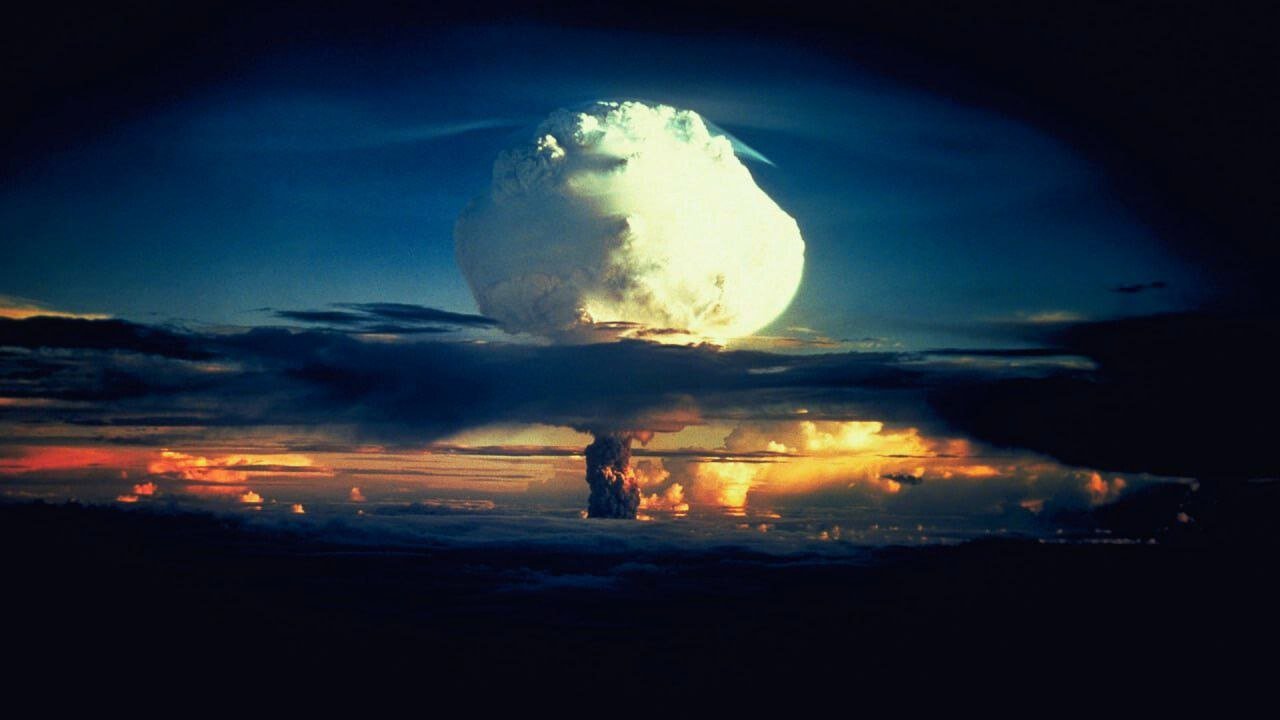
Major Cold War Crises and Conflicts
The American Cold War era was marked by several critical crises and conflicts that profoundly shaped international relations and global stability. One of the earliest and most significant events was the Berlin Blockade and Airlift (1948-1949). In an attempt to force the Western Allies out of Berlin, the Soviet Union blocked all ground access to the city. In response, the United States and its allies orchestrated the Berlin Airlift, a massive logistical effort that supplied West Berlin with essential goods via air. This event not only underscored the ideological divide but also highlighted the resolve of the Western powers to counter Soviet aggression.
The Korean War (1950-1953) further intensified Cold War tensions. The conflict began when North Korean forces, backed by the Soviet Union and China, invaded South Korea. The United States, under the banner of the United Nations, intervened to support South Korea. The war resulted in a stalemate and an armistice, leaving Korea divided along the 38th parallel. This conflict illustrated the global scope of the Cold War, showing that the struggle between communism and democracy had extended beyond Europe.
The Cuban Missile Crisis of October 1962 brought the world perilously close to nuclear war. When the United States discovered Soviet missiles in Cuba, President John F. Kennedy imposed a naval blockade and demanded their removal. After tense negotiations, Soviet Premier Nikita Khrushchev agreed to dismantle the missile sites in exchange for the U.S. promising not to invade Cuba and secretly agreeing to remove American missiles from Turkey. This crisis was a pivotal moment in the Cold War, demonstrating the potential for direct U.S.-Soviet confrontation and the importance of diplomatic channels.
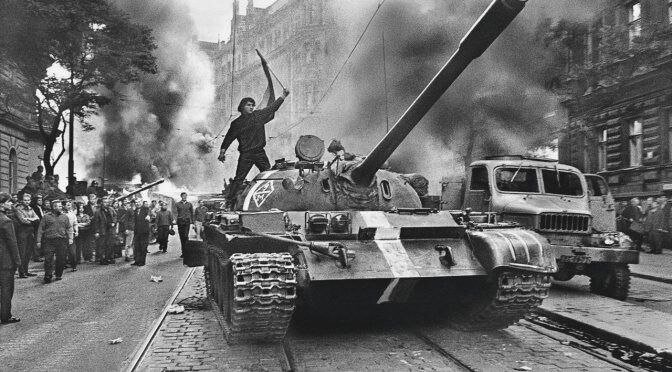
The Vietnam War (1955-1975) was another significant conflict, underscoring the limits of American power and the complexities of Cold War geopolitics. Initially a struggle between the communist North Vietnam, supported by the Soviet Union and China, and the anti-communist South Vietnam, supported by the United States, the war evolved into a protracted and contentious conflict. Despite significant military involvement, the U.S. failed to prevent the fall of South Vietnam to communist forces. The war had profound consequences for U.S. foreign policy and domestic opinion, leading to a more cautious approach in subsequent international engagements.
These crises and conflicts not only defined the Cold War era but also shaped the course of U.S.-Soviet relations and had lasting impacts on global stability. Each event demonstrated the high stakes of the ideological confrontation and the constant threat of escalation into broader, potentially nuclear, warfare.
Nuclear Arms Race and Space Race
The American Cold War era was marked by an intense rivalry between the United States and the Soviet Union, manifesting prominently in the nuclear arms race and the space race. The nuclear arms race began in earnest after World War II, as both superpowers sought to develop more powerful and numerous nuclear weapons. The development and testing of these weapons escalated dramatically, leading to the doctrine of Mutual Assured Destruction (MAD). This doctrine posited that any nuclear attack by one superpower would result in an equally devastating retaliatory strike, theoretically preventing either side from initiating a conflict due to the guaranteed mutual annihilation.
One of the most significant events of the nuclear arms race was the testing of the first hydrogen bomb by the United States in 1952, followed by the Soviet Union’s own hydrogen bomb test in 1953. These advancements brought about a perilous period of heightened tensions, with both nations stockpiling vast arsenals capable of unprecedented destruction. The Cuban Missile Crisis of 1962 epitomized the perilous brinkmanship of this era, bringing the world to the edge of nuclear war.
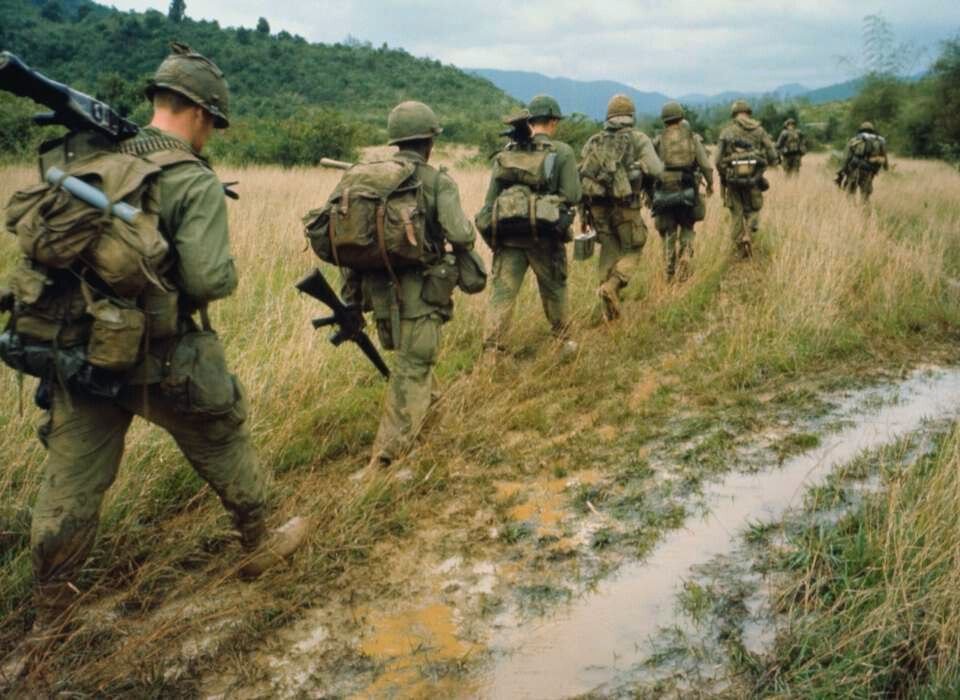
Parallel to the nuclear arms race was the space race, a competition to achieve significant milestones in space exploration. The Soviet Union initially took the lead with the launch of Sputnik in 1957, the first artificial satellite to orbit the Earth. This event spurred the United States to intensify its own space efforts, culminating in the historic Apollo moon landing in 1969. Neil Armstrong’s famous words, “That’s one small step for man, one giant leap for mankind,” symbolized not only a triumph for American space exploration but also a significant victory in the Cold War rivalry.
Later, the Strategic Defense Initiative (SDI), announced by President Ronald Reagan in 1983, aimed to develop a missile defense system that could protect the United States from nuclear attacks. Dubbed “Star Wars” by critics, the SDI was a testament to the ongoing technological and strategic competition between the superpowers, highlighting the relentless pursuit of superiority that defined the Cold War era.
Cold War Culture and Society
The Cold War era left an indelible mark on American culture and society, shaping the nation’s identity and influencing various aspects of daily life. One of the most significant impacts was the widespread fear and paranoia known as the Red Scare. This period was characterized by the intense fear of communist infiltration within the United States, leading to a nationwide hunt for alleged subversives. Senator Joseph McCarthy became a central figure during this time, with McCarthyism symbolizing the aggressive tactics used to root out suspected communists. The resulting atmosphere of suspicion and accusation permeated American society, affecting careers, relationships, and the broader social fabric.
In response to the perceived threat of a nuclear attack, civil defense measures became a prominent feature of American life. The government implemented various programs to prepare the public for potential nuclear strikes, including the construction of fallout shelters and the dissemination of educational materials on how to survive an atomic blast. Drills and public service announcements, such as the infamous “Duck and Cover” campaign, aimed to instill a sense of preparedness and resilience among citizens.
The Cold War also found its way into the cultural output of the time, profoundly influencing media, literature, and film. Hollywood produced numerous films that reflected Cold War anxieties, such as “Invasion of the Body Snatchers” and “Dr. Strangelove,” which used allegory and satire to comment on the era’s political tensions. Literature, too, delved into Cold War themes, with works like George Orwell’s “1984” and Arthur Miller’s “The Crucible” offering critical perspectives on the period’s ideological battles and societal hysteria.
Amidst this climate, counterculture movements and political dissent began to emerge. The 1960s saw the rise of various groups challenging the status quo, advocating for civil rights, peace, and social justice. These movements often critiqued the government’s Cold War policies and sought to promote alternative visions of American society. The era’s music, art, and protests reflected a growing disillusionment with the prevailing political and cultural norms, contributing to a broader dialogue on democracy, freedom, and human rights.
International Alliances and Proxy Wars
The American Cold War era was characterized by the strategic formation of international alliances, most notably NATO and the Warsaw Pact. These alliances were not just military pacts but also ideological coalitions, with NATO embodying Western democratic values and the Warsaw Pact representing Soviet communism. The formation of these alliances significantly shaped global geopolitics, leading to a bipolar world order where nations were often pressured to align with either the United States or the Soviet Union.
NATO, or the North Atlantic Treaty Organization, was established in April 1949. It aimed to provide collective security against the Soviet Union. The alliance included Western European nations, the United States, and Canada, pledging mutual defense in response to an attack by any external party. This collective defense mechanism was particularly significant during the Cold War, as it deterred Soviet expansion into Western Europe.
Conversely, the Warsaw Pact was created in 1955 in response to NATO’s formation. It included the Soviet Union and its Eastern European satellite states. The Warsaw Pact served as a tool for the Soviet Union to maintain control over its allies and ensure their allegiance in the ideological battle against the West. The existence of these alliances led to an arms race and heightened tensions, contributing to the Cold War’s pervasive atmosphere of suspicion and rivalry.
The influence of these alliances extended beyond Europe, manifesting in various proxy wars in regions like the Middle East, Africa, and Latin America. The Soviet-Afghan War (1979-1989) serves as a prominent case study. This conflict saw the Soviet Union intervening in Afghanistan to support the communist government, while the United States, through covert operations, provided support to the Afghan Mujahideen. This proxy war not only devastated Afghanistan but also strained Soviet resources and contributed to the eventual dissolution of the Soviet Union.
Similarly, U.S. interventions in Latin America, such as in Chile and Nicaragua, were driven by the desire to curb the spread of communism. In Chile, the U.S. supported the overthrow of President Salvador Allende in 1973, leading to the establishment of a military dictatorship under Augusto Pinochet. In Nicaragua, the U.S. funded the Contras to fight the Sandinista government, which had overthrown the Somoza dictatorship. These interventions often resulted in prolonged conflicts and significant human suffering, leaving lasting impacts on the regions involved.
In essence, the international alliances of the Cold War era played a crucial role in shaping global geopolitics, leading to a series of proxy wars that had profound and lasting consequences. The strategic maneuvers and ideological battles between NATO and the Warsaw Pact countries defined a significant portion of 20th-century history, influencing international relations and conflicts worldwide.
Détente and the Thawing of Relations
The 1970s marked a significant shift in the Cold War dynamics, characterized by the period of détente—a notable easing of tensions and the fostering of improved diplomatic relations between the United States and the Soviet Union. This era was underscored by a series of landmark agreements and high-level summits that sought to mitigate the risk of nuclear conflict and build a framework for cohabitation and mutual benefit.
One of the pivotal moments in this détente period was the signing of the Strategic Arms Limitation Talks (SALT) agreements. SALT I, signed in 1972, was the first major arms control pact of the Cold War, placing limits on the number of intercontinental ballistic missiles (ICBMs) and submarine-launched ballistic missiles (SLBMs) each superpower could possess. It was followed by SALT II in 1979, which sought to curtail the arms race further by imposing restrictions on multiple independently targetable reentry vehicles (MIRVs) and other strategic weapons, although it was never ratified due to subsequent geopolitical tensions.
Another significant milestone was the Helsinki Accords, signed in 1975. This multilateral agreement, involving 35 nations, aimed to improve relations between the Communist bloc and the West. The accords covered a wide array of issues including security, cooperation in economics, science, technology, and human rights. While it was not legally binding, it established a framework for dialogue and cooperation, contributing to the reduction of Cold War hostilities.
Summits between American and Soviet leaders, such as those between President Richard Nixon and General Secretary Leonid Brezhnev, played a crucial role in facilitating détente. These high-profile meetings underscored a mutual recognition of the necessity to avoid nuclear confrontation and laid the groundwork for a more stable coexistence. However, the détente period was not immune to setbacks. Factors such as the Soviet invasion of Afghanistan in 1979 and the ensuing U.S. response significantly cooled relations, marking the end of this brief thaw.
The détente period remains a critical chapter in Cold War history, illustrating that even amidst profound ideological divides, diplomacy and negotiation can pave the way for periods of relative peace and stability.
The End of the Cold War and Its Legacy
The conclusion of the Cold War marked a pivotal moment in global history, characterized by a series of transformative events and policies. Central to this denouement were the reformist initiatives of Mikhail Gorbachev, the last leader of the Soviet Union, who introduced Perestroika (restructuring) and Glasnost (openness). These policies aimed to revitalize the stagnating Soviet economy and promote greater transparency and freedom of information. Gorbachev’s efforts to decentralize the economy and reduce the government’s grip on political discourse played a crucial role in setting the stage for monumental changes both within the Soviet Union and across Eastern Europe.
The fall of the Berlin Wall in 1989 symbolized the crumbling of communist regimes in Eastern Europe and the weakening grip of Soviet influence. This event not only signified the reunification of Germany but also served as a harbinger for the dissolution of the Soviet Union itself. By December 1991, the Soviet Union officially disintegrated, leading to the emergence of independent republics and the end of the bipolar world order dominated by the U.S. and the USSR.
U.S. diplomacy, characterized by strategic negotiations and arms control agreements, played a significant role in the peaceful resolution of Cold War tensions. The Reagan Administration’s initiatives, such as the Strategic Defense Initiative and summits with Gorbachev, facilitated a de-escalation of the nuclear arms race and fostered a cooperative dialogue. This diplomatic engagement was instrumental in ensuring that the Cold War concluded without direct military conflict between the superpowers.
The legacy of the Cold War continues to influence contemporary international relations and global security dynamics. The dissolution of the Soviet Union led to a unipolar world order dominated by the United States, while former Soviet states and Eastern European countries navigated their newfound independence and integration into global economic and political systems. The Cold War era also left an indelible mark on international organizations and alliances, such as NATO, which adapted to new security challenges in the post-Cold War world. Furthermore, the ideological and strategic lessons from this period continue to inform current geopolitical strategies and diplomatic relations.
OUR SITE: toinewsalert.com

